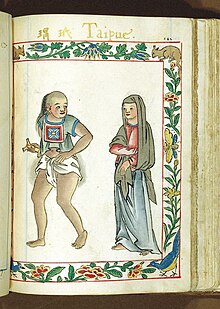Pangasinan people
| Total population | |
|---|---|
| 1,823,865[1] (1.98% of the Philippine population) | |
| Regions with significant populations | |
(Pangasinan, Tarlac, La Union, Benguet, Nueva Ecija, Zambales, Nueva Vizcaya, Metro Manila) Worldwide | |
| Languages | |
| Pangasinan, Ilocano, Tagalog, English | |
| Religion | |
| Predominantly Roman Catholicism, some are Protestantism, Iglesia Ni Cristo, Islam, Buddhism and Animism | |
| Related ethnic groups | |
| Filipinos (Kapampangan, Sambal, Ilocano, Ibanag, Igorot, Ivatan, other Filipino ethnic groups) other Austronesian peoples |
The Pangasinan people (Template:Lang-pag), also known as Pangasinense, are an ethnolinguistic group native to the Philippines. Numbering 1,823,865 in 2010, they are the tenth largest ethnolinguistic group in the country.[2] They live mainly in their native province of Pangasinan and the adjacent provinces of La Union and Tarlac, as well as Benguet, Nueva Ecija, Zambales, and Nueva Vizcaya. Smaller groups are found elsewhere in the Philippines and worldwide in the Filipino diaspora.
Etymology
The name Pangasinan means "land of salt" or "place of salt-making". It is derived from asin, the word for "salt" in Pangasinan. The Pangasinan people are referred as Pangasinense. The term Pangasinan can refer to the indigenous speakers of the Pangasinan language or people of Pangasinan heritage.
Calling Pangasinans Pangalatok is derogatory. It came from the terms "Pangasinense" and akatok — a Pangasinan word that means crazy in English.
Demographics


The estimated population of the Pangasinan people in the province of Pangasinan is 2.5 million. The Pangasinan people are also living in the neighboring provinces of Tarlac and La Union (which used to be parts of Pangasinan Province), Benguet, Nueva Ecija, Zambales, and Nueva Vizcaya; as well as in Pangasinan communities in the Philippines and overseas.
Belief Systems
Prior to colonization and subjugation from the Spanish, the Pangasinan (or Pangasinense) people believed in a pantheon of unique deities (gods and goddesses). The most important of which was their supreme god named Ama-Gaolay.[3] When the Spanish arrived, they burned and destroyed all things related to indigenous Pangasinense religion, including idols and scripts, replacing them with Roman Catholicism and the Roman alphabet.[3]
Notable individuals
Urduja was a legendary woman warrior who is regarded as a heroine in Pangasinan. Malong and Palaris fought for independence from Spanish rule. Other prominent people of Pangasinan descent include Fidel Ramos, born in Lingayen, he served in the Cabinet of President Corazón Aquino, first as chief-of-staff of the Armed Forces of the Philippines (AFP), and later on, as Secretary of National Defense from 1986 to 1991 before becoming the Philippine's 12th president. Tania Dawson whose mother hails from Santa Maria, Pangasinan, lawmaker Jose de Venecia, Jr., who was born in Dagupan City, Pangasinan; and actor and presidential candidate Fernando Poe, Jr., whose father was from San Carlos City, Pangasinan. Other notable Pangasinans are Victorio C. Edades, Angela Perez Baraquio, Ambrosio Padilla, Cheryl Cosim (reporter) and Ric Segreto. Notable Pangasinan actresses include Donita Rose, Marlou Aquino, Lolita Rodriguez, Barbara Perez, Gloria Romero, Carmen Rosales, Nova Villa, Jhong Hilario, and Liza Soberano.
See also
- Bagoong
- Bicolano people
- Caboloan
- Huangdom of Pangasinan
- Igorot people
- Ilocano people
- Ivatan people
- Kapampangan people
- Limahong
- Lumad
- Moro people
- Negrito
- Salt
- Sambal people
- Tagalog people
- Visayan people
References
- ^ "2010 Census of Population and Housing, Report No. 2A: Demographic and Housing Characteristics (Non-Sample Variables) - Philippines" (PDF). Philippine Statistics Authority. Retrieved 19 May 2020.
- ^ "2010 Census of Population and Housing, Report No. 2A: Demographic and Housing Characteristics (Non-Sample Variables) - Philippines" (PDF). Philippine Statistics Authority. Retrieved 19 May 2020.
- ^ a b https://ncca.gov.ph/about-ncca-3/subcommissions/subcommission-on-cultural-communities-and-traditional-arts-sccta/northern-cultural-communities/the-lowland-cultural-community-of-pangasinan/
